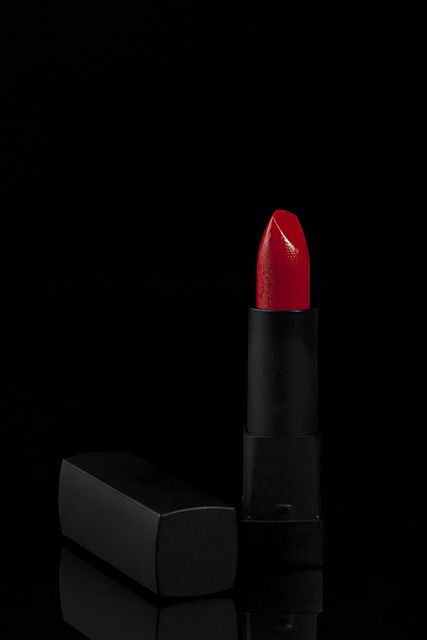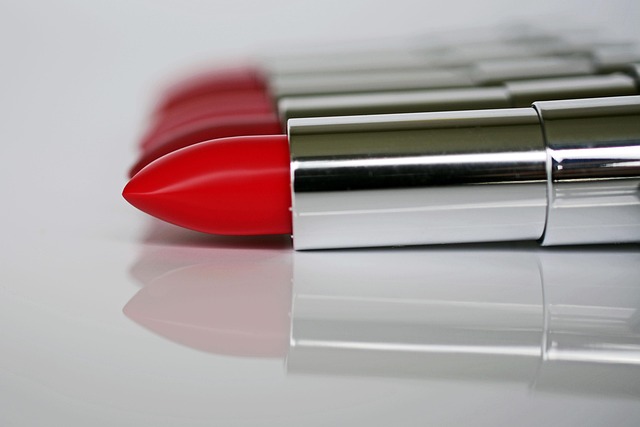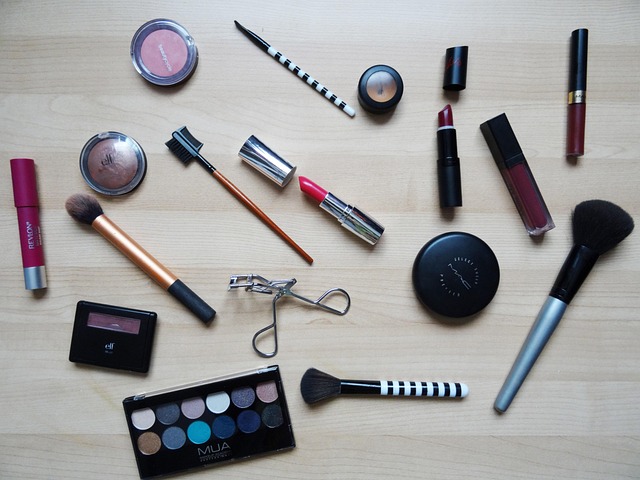Nude lipstick, a global favorite among makeup enthusiasts, captivates with its timeless elegance, versatility, and subtle enhancement of natural features. This range from soft pinks to skin-toned neutrals caters to preferences for either a natural glow or sophisticated look. Beyond aesthetics, nude lipsticks contain complex blends of ingredients beneficial for lip health, including waxes for texture, pigments for color, and emollients for hydration, such as beeswax, mineral pigments, and jojoba oil. While traditional formulations may include allergens like fragrances or lanolin, natural alternatives using plant-based ingredients like shea butter offer safer, hypoallergenic options preferred by those seeking a subtle, natural look and sustainable beauty practices.
“Unveiling the secrets behind your favorite beauty staple—nude lipstick. This popular choice not only enhances natural lip hues but also reflects modern trends. Our article delves into the intricate world of lipstick chemicals, exploring their composition and safety. From the allure of subtle shades to the rise of natural alternatives, we guide you through the options. Discover the benefits of organic ingredients for healthier lips while still achieving that perfect nude glow. Read on to navigate the chemical landscape and make informed decisions.”
- Nude Lipstick: A Popular Choice and Its Allure
- Uncovering the Chemical Composition of Lipsticks
- The Safety Profile of Common lipstick Ingredients
- Natural Alternatives and Their Benefits for Your Lips
Nude Lipstick: A Popular Choice and Its Allure

Nude lipstick has become a staple in many makeup collections, capturing the hearts and lips of folks worldwide. Its timeless allure lies in its versatility and ability to enhance natural features subtly. This type of lipstick offers a range of shades from soft pinks to skin-toned neutrals, allowing wearers to achieve a natural glow or create a sophisticated, low-key look. The appeal extends beyond functionality; nude lipstick is often seen as a symbol of elegance and self-expression, catering to those who prefer a more subtle and refined aesthetic.
In the world of beauty, it has proven to be a game-changer, revolutionizing the way people approach lip color. With its ability to complement various skin tones and create a seamless finish, nude lipstick has become a versatile tool in any makeup enthusiast’s kit, fostering a sense of confidence and individuality.
Uncovering the Chemical Composition of Lipsticks

Lipstick, a staple in many beauty routines, is more than just a vibrant hue; it’s a complex blend of ingredients designed to enhance and protect our lips. While the outer appearance may be what catches our eye, the true magic lies in its chemical composition. Unveiling these components is essential, especially when considering that even a subtle shade like nude lipstick can contain a surprising array of substances.
From waxes for texture and consistency to pigments for color and emollients for hydration, each ingredient plays a crucial role. For instance, beeswax and carnauba wax are commonly used for their binding properties, ensuring the lipstick remains creamy yet sets to a matte or glossy finish. Meanwhile, mineral-based pigments offer vibrant colors, and natural oils like jojoba oil can provide much-needed moisture, making them particularly appealing in nude lipsticks aimed at maintaining lips’ health and hydration.
The Safety Profile of Common lipstick Ingredients

Lipstick, a staple in many makeup kits, contains a variety of ingredients that can range from natural to synthetic. While some components are known for their vibrant hues and longevity, others raise concerns about safety, especially when it comes to frequent application on sensitive lip skin. Common lipstick ingredients like waxes (e.g., beeswax, carnauba), oils (e.g., mineral oil, jojoba oil), and pigments offer a combination of benefits – from providing a smooth finish to extending wear time. These substances are generally considered safe for topical use in small amounts, especially when it comes to nude lipsticks that often have less intense formulas.
However, other elements like certain fragrances, lanolin, and some synthetic dyes or compounds have been linked to potential skin irritation or allergic reactions in some individuals. Fragrances, in particular, can be a complicating factor as their composition varies widely between brands. For those with sensitive lips or specific allergies, opting for lipsticks with minimal ingredients, labeled “hypoallergenic,” or formulated for delicate skin may be more suitable. When it comes to nude lipsticks, the safety profile largely depends on the individual components and their concentrations, making research and ingredient awareness key for consumers.
Natural Alternatives and Their Benefits for Your Lips

Many modern lipsticks contain a range of chemicals that can be hard for the skin to process, which is why opting for natural alternatives is becoming increasingly popular. Ingredients like beeswax and shea butter are gentle on the lips, providing hydration and protection without the potential irritants found in many commercial products. These natural options often offer a softer, more subtle finish, perfect for those who prefer a natural look, especially with nude lipstick.
By choosing lipsticks made with plant-based ingredients, you can avoid harsh chemicals and potentially reduce the risk of allergies or skin irritation. Natural alternatives are not just kinder to your lips; they also contribute to a more sustainable beauty routine, as many eco-conscious brands focus on using organic, ethically sourced materials, ensuring a healthier planet and beautiful, healthy lips.
Nude lipstick has captured the hearts of many, but it’s essential to consider its chemical composition. While some ingredients offer allure and wearability, others may raise concerns about safety. Delving into the world of lipstick chemistry reveals a mix of natural and synthetic elements. As consumers, choosing natural alternatives with proven benefits for lip health can be a wise decision. Remember that, in terms of beauty products, understanding what’s on (and in) your lips is key to making informed choices.
